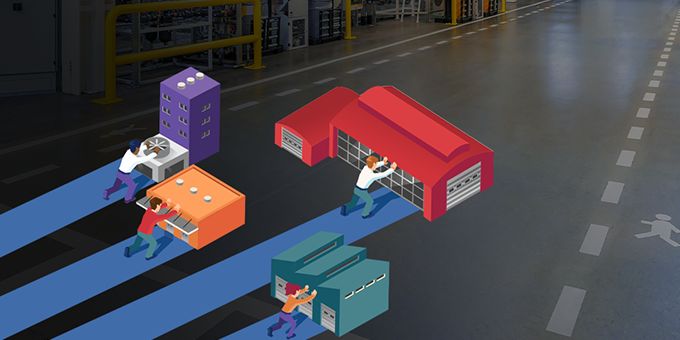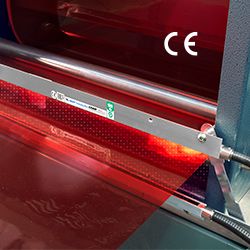The multitude of challenges that manufacturers face today is accelerating the need to adapt process innovation, embrace technology, and digitalize operations. Transformation is essential for manufacturers to become more resilient, agile, productive, and profitable.
 Next-Gen Technologies to Navigate Key Shifts in Industrial Manufacturing
Next-Gen Technologies to Navigate Key Shifts in Industrial Manufacturing

Deb Geiger, VP Global Marketing | Aegis Software
But doing so requires organizations to shift their mindset around digital transformation strategies. Although the transformative benefits of Industry 4.0 are crucial for a manufacturer's survival and growth, few have put in the significant time and effort it takes to become prepared for the future. The time has never been better than now to reimagine and reshape the digital manufacturing infrastructure to build more connected, collaborative, resilient, and highly integrated operations.
In this blog, we explore the industry's current state, the shifts, and transformations that are happening, and what manufacturers can do to stay ahead of what's next.
Navigating 2021's Many Disruptions
Today's manufacturing industry is marked by a multitude of disruptions. These disruptions have had serious operational and financial ramifications for many manufacturers—both positive and negative. They have forced manufacturers to rethink risk management and contingency plans, safety protocols, operations, and new ways of working—all at the same time.
Simultaneously, there is the need to future-proof the business as much as possible using the latest technology solutions. The ultimate objective is to increase resilience, protect your operations, and support your employees through these times and sustain a competitive advantage that accelerates growth. It's well-known that manufacturers with digital platforms, accessible data, and advanced analytical capabilities can respond more quickly, accurately, and successfully to disruptions.
Surfacing Key Technology Drivers
Digital technologies are driving transformation across the manufacturing space, and Industry 4.0 (also known as the Fourth Industrial Revolution) is here now. It comes as no surprise that digital enablement is a main component to fueling rapid change and building resilience in manufacturing. Given the industry's current state, manufacturers need to identify the most critical products for stabilization and growth, focus on reinforcing associated supply chains, and assess critical skills required to meet near-term and future demand.
There are many technologies that are now in play. When technologies converge, new opportunities emerge, and companies can look at growth, potential bottom-line benefits, and financial topline benefits. The main technologies of Industry 4.0 include:
- Additive Manufacturing
- Artificial Intelligence/ Machine Learning
- Augmented Reality/ Virtual Reality
- Cloud
- Industrial Internet of Things
- Cybersecurity
- Industrial Software
- Machine Vision
- Autonomous Robots
- Cognitive Computing
- Digital Twin
The benefits of implementing these technologies include a shorter time to market, increased flexibility, more efficiencies and throughput, enhanced productivity, greater quality, more intuitive customer experiences, and improved profitability. Leveraging many of these technologies provides a robust springboard for future manufacturing success. It is essential not just to add on technologies because they seem cool or trending, but rather assess the solutions based on solid business value and holistically look at them to ensure interoperability for maximum gains.
Enabling the Future of Industry 4.0 Transformation
Ultimately, the future of Industry 4.0 will be shaped by four key enablers: sustainability, digitalization, decentralization, and business models. Underpinning these four enablers is the need to build resilience and reduce the financial risk of customers. Let's take a closer look at each of them:
- Sustainability is the emphasis on clean and efficient models of energy usage. It stresses the importance of reusing, repurposing, and recycling of materials. Examples of this include decarbonization, energy efficiency, and a circular economy.
- Digitalization is going beyond just using technology to convert data and processes. Digitalization is the transformation that results from leveraging digital technologies to change business models and provide new revenue opportunities while simultaneously breaking down disparate silos of information.
- Decentralization is the simplification of information and process flow through ease of access and monitoring. Examples of decentralization include edge computing, blockchain, and ops decentralization.
- Business Models detail better ways of realizing outcomes. These explore added capabilities and transform the current models of operation. Examples of these are XaaS (Anything-as-a-Service), Data-as-a-Service, and the shared economy.
Navigating Key Shifts Here & Now
There are significant changes that manufacturers should realize today to ensure they have the right digital infrastructure for resiliency and agility in the future. These shifts re-write the incumbent rules, thus opening up the market for innovative solutions and service providers.
They include:
- From Linear to Integrated: The linear value chain is moving towards a circular and integrated value chain. Here is where the end-to-end data thread comes into play. Manufacturers should follow the data, not the product. The data management strategy will be the biggest opportunity for value creation.
- From Automation to Cognition: Automation is turning into cognition, assisted by AI. Artificial Intelligence is already a hot topic, but it's heading towards being the go-to. The real value of AI comes in detecting areas for improvement to the processes by revealing causal relationships that humans could never detect.
- From Connectivity to Contextualization: Factories have an abundance of data points coming from machines, devices, people, and more. But merely having the data is not enough. While many IIoT platforms and manufacturing execution systems claim they can extract data from machines, the data gathered needs meaning. Without meaning, IIoT is relegated to colossal data lakes with no real value. To enable true IIoT, factories must make the shift from connectivity to contextualization.
- Ultimate Adaptability & Personalization: The future will favor those that have built up a measure of resilience and agility. It is without a doubt that the trend towards personalized products is permeating every manufacturing industry. Companies should look at technologies that support Automate-To-Order capabilities out-of-the-box. The ability to offer on-demand adaptability and personalization will provide a distinct competitive advantage to those companies that can effortlessly meet the increasing demand for personalized, quality products.
The Fourth Industrial Revolution is truly changing the way we design, make, source, supply, and service. The linear, disjointed, and reactive past gives way to a circular, integrated and predictive future.
Transformation is For Every Organization—No Matter the Size
The democratization of automation, intelligence, and connectivity busts the myth that transformation is expensive and only for large organizations. The key, however, is for organizations to have the right tools to enable their transformation. With Aegis' FactoryLogix, an intuitive, Industry 4.0-enabled IIoT platform, manufacturers can seamlessly drive to a truly intelligent digital twin. With this kind of solution in place, time-to-value can be accelerated, quality is amplified, productivity is enhanced, and complete end-to-end visibility is achieved—truly transforming the entire organization now and in the future.
The content & opinions in this article are the author’s and do not necessarily represent the views of ManufacturingTomorrow
Comments (0)
This post does not have any comments. Be the first to leave a comment below.
Featured Product

